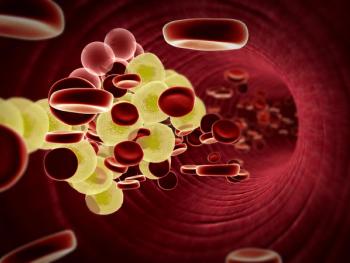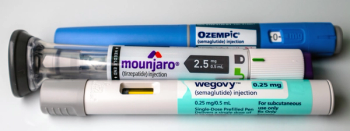
Biopolymer Could Result in Long-Lasting Diabetes Treatment
Experimental biopolymer observed to maintain blood glucose levels in monkeys for 2 weeks.
Patients with type 2 diabetes who cannot use insulin properly are unable to maintain blood glucose levels. Normalizing blood glucose levels is important to prevent complications associated with diabetes, according to a study published by Nature Biomedical Engineering.
Despite the availability of effective treatments, some patients struggle to maintain blood glucose levels, which can result in blindness, kidney disease, heart disease, stroke, and
The authors of the study suggest that a biopolymer injection could replace daily insulin with a once or twice monthly injection.
Nearly half of patients with type 2 diabetes do not properly manage their condition, according to the study. The investigators suggest that a potential reason for this poor disease control is that patients may have difficulty with adherence to treatments that require meal-specific doses. Furthermore, some diabetes treatments can also cause hypoglycemia or weight gain.
For manufacturers, a challenge to treating diabetes is the insulin requirements for each person vary. To address the barrier, glucagon-like peptide-1 (GLP1) receptor agonists were developed. The drugs release insulin to normalize blood glucose levels.
Since GLP1 receptor agonists do not last long in the body, manufacturers have explored numerous ways to increase half-life, including fusing it with synthetic and biological compounds, according to the study. This has resulted in the drugs lasting for up to 1 week.
However, no current treatments have prevented the drug’s efficacy from decreasing.
In the study, the authors fused GLP1 with the heat-activated biopolymer, elastin-like polypeptide, which can be injected. Once in the blood, body heat causes the biopolymer to form a gel, which releases the drug slowly and consistently.
The authors discovered that the biopolymer controlled blood glucose levels in mice for up to 10 days with only a single injection, according to the study. Previously, the controlled release lasted only 2 to 3 days.
In further tests in monkeys, the authors found that the biopolymer injection controlled glucose levels for more than 2 weeks from 1 injection. Importantly, the drug was released consistently.
“Although we’ve pursued this method in the past, Kelli Luginbuhl, a grad student in my lab, systematically worked to vary the design of the delivery biopolymer at the molecular level and found a sweet spot that maximized the duration of the drug’s delivery from a single injection,” said senior author Ashutosh Chilkoti, PhD. “By doing so, we managed to triple the duration of this short-acting drug for type 2 diabetes, outperforming other competing designs.”
Currently, patients treated with dulaglutide — the longest-lasting diabetes treatment – requires injections once per week, while standard insulin requires at least 2 injections per day.
These findings suggest that the biopolymer could reduce the injection burden for patients with type 2 diabetes.
The authors are now planning to test the biopolymer on other animals and determine how the immune system handles multiple injections. They are also looking into how the biopolymer could be used with other drug classes, according to the study.
“What's exciting about this work was our ability to demonstrate that the drug could last over 2 weeks in non-human primates,” said first author Kelli Luginbuhl, PhD student. “Because our metabolism is slower than monkeys and mice, the treatment should theoretically last even longer in humans, so our hope is that this will be the first bi-weekly or once-a-month formulation for people with type 2 diabetes.”
Newsletter
Stay informed on drug updates, treatment guidelines, and pharmacy practice trends—subscribe to Pharmacy Times for weekly clinical insights.

















































































































































































































